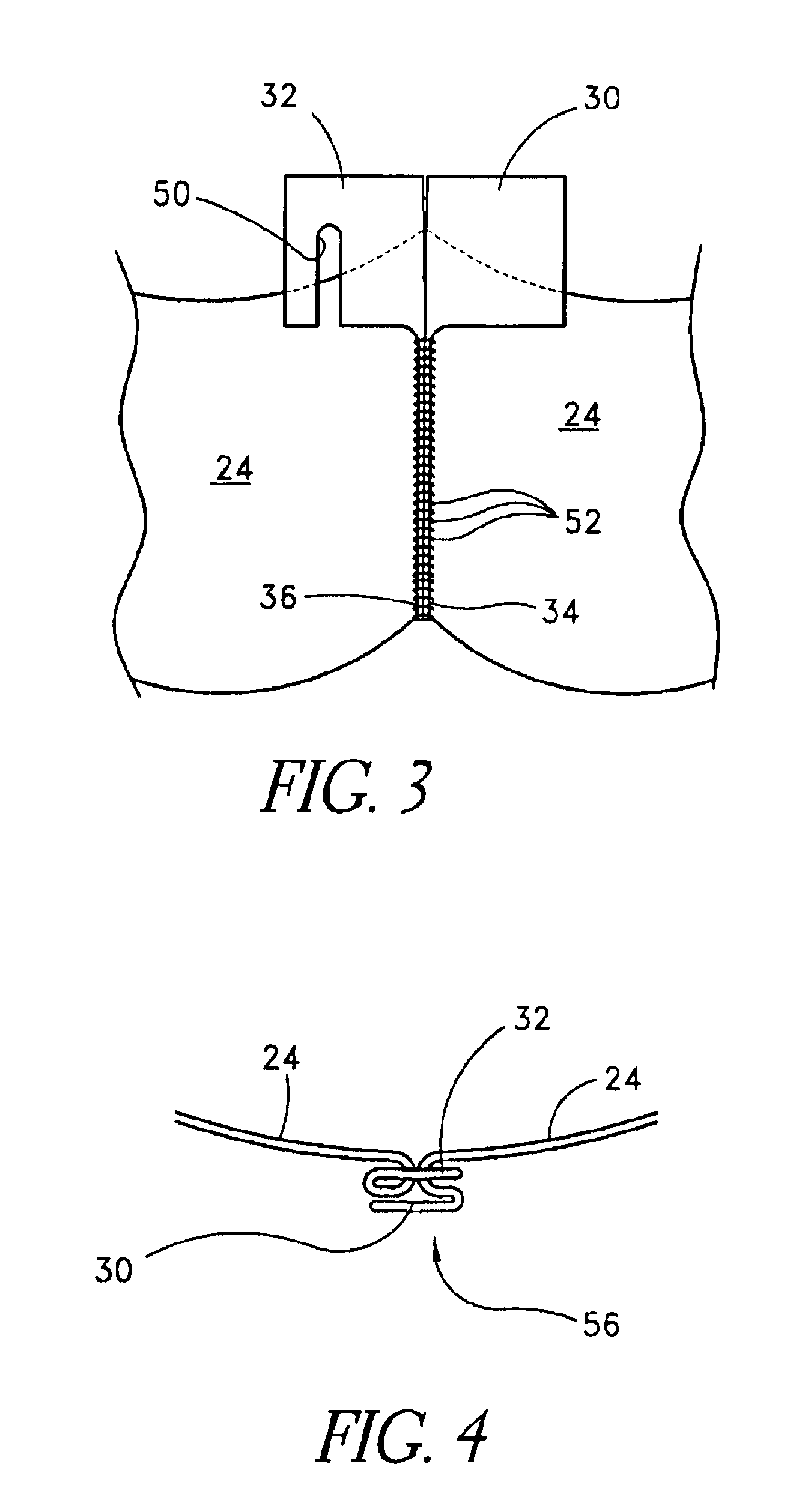Method of cutting material for use in implantable medical device
a medical device and implantable technology, applied in the field of implantable medical devices, can solve the problems of affecting the durability of the device, putting a patient at substantial risk, and causing dislocation of the patient,
- Summary
- Abstract
- Description
- Claims
- Application Information
AI Technical Summary
Benefits of technology
Problems solved by technology
Method used
Image
Examples
Embodiment Construction
The present invention can be used to cut out segments used when constructing several types of prostheses. One type of prosthesis that particularly benefits from use of the present invention is a replacement heart valve having one or more leaflets that are cut from a source material and assembled to form the valve. FIGS. 1-4 present a prosthetic aortic heart valve 20 constructed in accordance with an embodiment of the present invention. This heart valve 20 is discussed in order to help illustrate aspects and advantages of the invention and is discussed in more detail in the above-referenced application entitled PROSTHETIC HEART VALVE. It is to be understood that other types of implantable prostheses may also benefit from the aspects discussed below.
The aortic heart valve 20 of FIGS. 1-4 comprises three leaflets 22 that are cut out of a generally flat, flexible source material. Each of the three leaflets 22 is cut out according to the pattern shown in FIG. 2. As shown, each leaflet 22...
PUM
| Property | Measurement | Unit |
|---|---|---|
| cutting speed | aaaaa | aaaaa |
| wavelength | aaaaa | aaaaa |
| diameter | aaaaa | aaaaa |
Abstract
Description
Claims
Application Information
 Login to View More
Login to View More - R&D
- Intellectual Property
- Life Sciences
- Materials
- Tech Scout
- Unparalleled Data Quality
- Higher Quality Content
- 60% Fewer Hallucinations
Browse by: Latest US Patents, China's latest patents, Technical Efficacy Thesaurus, Application Domain, Technology Topic, Popular Technical Reports.
© 2025 PatSnap. All rights reserved.Legal|Privacy policy|Modern Slavery Act Transparency Statement|Sitemap|About US| Contact US: help@patsnap.com



